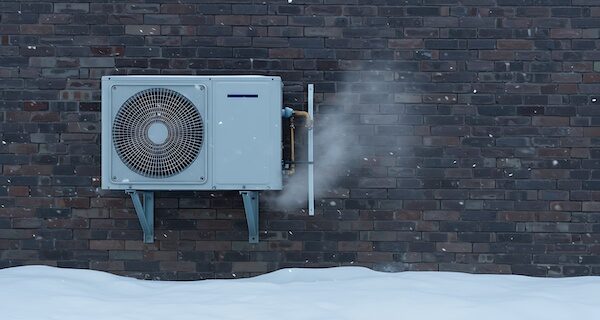Preparing School Heating Systems Before Winter Hits

Reliable heating performance is essential to keeping schools and campuses safe, comfortable, and focused on learning. For education facilities teams, preparation before the first deep freeze isn’t just about mechanical systems—it’s about ensuring that students, educators, and staff can go about their days without disruption.
When freezing temperatures arrive, classrooms, residence halls, cafeterias, and offices all depend on heating systems that deliver consistent warmth from the first cold morning onward. Yet too often, the first blast of winter reveals boilers, pumps, and controls that were not fully prepared. The result can be cold classrooms, frustrated occupants, and emergency repair calls that interrupt instruction and strain resources.
The key to avoiding these issues is a proactive, structured approach to heating readiness. By combining preventive maintenance, testing, and ongoing operational awareness, education facilities professionals can enter the season confident that their facility’s heating assets—and the learning environments they care for—will perform when needed most.
Preventive Maintenance: The Foundation Of Reliability
Annual preventive maintenance (PM) is the foundation of heating system performance. A complete PM program should include thorough inspection checklists, recorded values, and supporting documentation such as photos, invoices, and notes. These records demonstrate compliance and provide a history that supports troubleshooting and future planning.
Service should always be performed by qualified, certified contractors following manufacturer guidelines. Relying on certified expertise ensures that both equipment performance and warranty protections remain intact.
Best Practice: Scheduling preventative maintenance early in the fall helps avoid the year-end rush and allows time to address any deficiencies uncovered during inspection.
Technician & Contractor Best Practices
Facilities teams—whether in-house or contracted—play a critical role in ensuring readiness. Key practices include:
- Safety Protocols: Confirming lockout/tag out procedures during servicing.
- Parts and Testing: Verifying that preventive maintenance kits and replacement parts are installed and witnessing interlock testing and equipment start-up.
- Gas Leak Testing: Performing annual leak tests on boilers and water heaters.
- Worksite Standards: Ensuring mechanical rooms are left clean, organized, and safe following service.
Beyond technical duties, communication between technicians, supervisors, and management is equally vital. Documenting findings, capturing photos of completed work, and logging data in the maintenance management system builds a traceable record of accountability. These practices not only ensure reliable operation but also reinforce a culture of ownership and professionalism across facility teams.
Auxiliary Systems: Beyond The Boiler
Heating reliability depends on more than just the boiler itself. Auxiliary systems—including distribution pumps, expansion tanks, steam traps, and heat exchangers—must be included in winter preparation. Failures in these components can disrupt heating across an entire building or campus and are often harder to diagnose once the system is running under load.
Before heating equipment is placed into service, facilities teams should:
- Clean strainers and verify gauges and controls.
- Fully charge and pressure-test the distribution system while checking for leaks.
- Vent air from piping, tanks, and exchangers to improve circulation and efficiency.
- Conduct startup and test runs for each unit in accordance with manufacturer guidance.
Technicians should also review trends from the building automation system to identify early warning signs, such as abnormal temperature differentials or fluctuating pressure, that indicate potential issues before they escalate.
Ongoing Readiness During The Season
Once heating systems are online, proactive management continues to matter. A best practice is to rotate equipment weekly, either through automation via the building automation system (BAS) or by establishing a manual routine. Regular rotation prevents idle equipment from deteriorating and verifies that backup assets remain operational.
Facilities with two-pipe systems face additional complexity. Correct sequencing of valves—both in distribution piping and at HVAC coils—is essential to maintain proper flow and to avoid heating disruptions. Regular walk-throughs during the season help confirm that thermostats, sensors, and actuators are functioning as expected.
Contingency Planning
Despite careful preparation, unexpected issues may arise. Facilities can minimize downtime by:
- Maintaining an inventory of critical spare parts
- Establishing service agreements with guaranteed response times
- Programming fallback strategies into control systems.
Reviewing historical incident data can also help identify recurring failure points and guide future investments. Planning for contingencies is a safeguard that ensures performance even when unexpected failures occur.
For education facilities professionals, preparing heating systems before winter is more than a maintenance checklist—it’s a commitment to student comfort, staff safety, and uninterrupted learning. A well-prepared heating system supports stable classroom temperatures, protects sensitive equipment in labs and technology spaces, and ensures that academic operations continue smoothly even during harsh weather.
Every inspection, test, and adjustment helps ensure that teachers can teach, students can focus, and schools can operate without disruption.
By taking a structured, campus-wide approach to heating readiness, education facility teams demonstrate operational excellence and stewardship of institutional resources. The payoff is not only in reduced downtime and lower energy costs but in peace of mind for the entire campus community.
By Doug Kessler
Doug Kessler is the Senior Maintenance Project Manager with SSC Services for Education.

